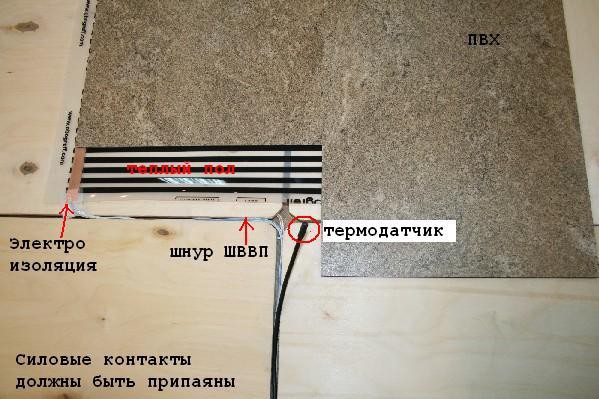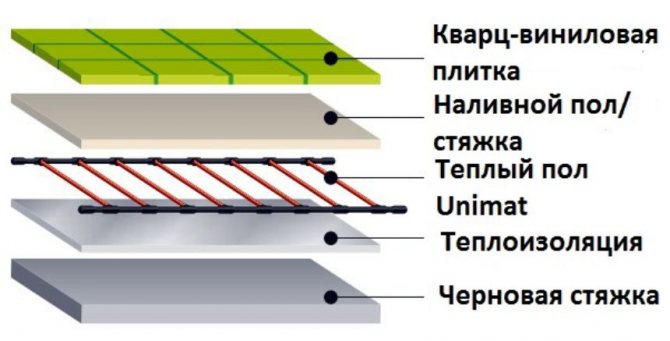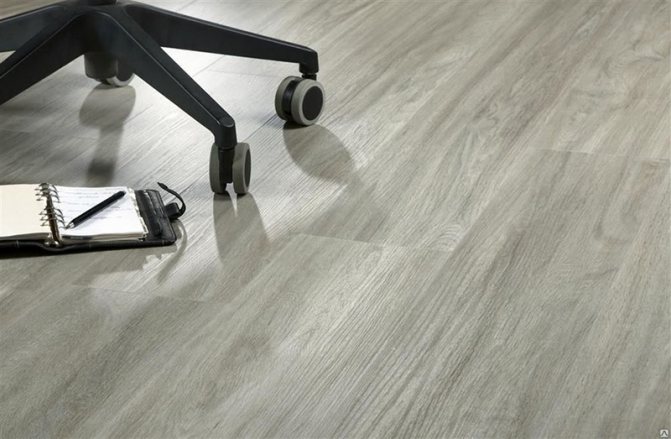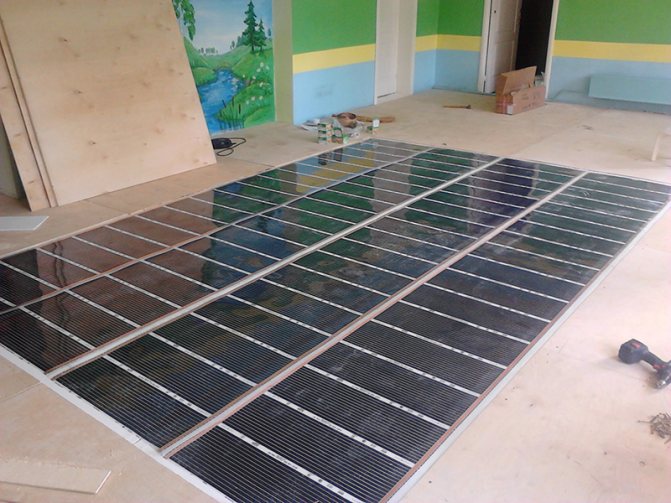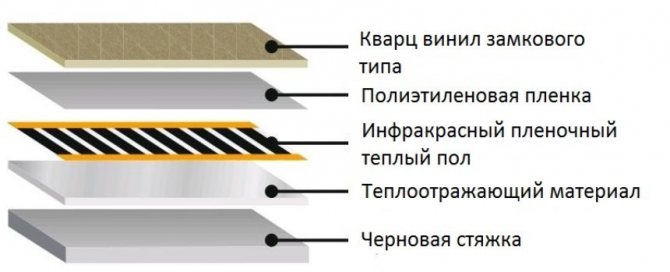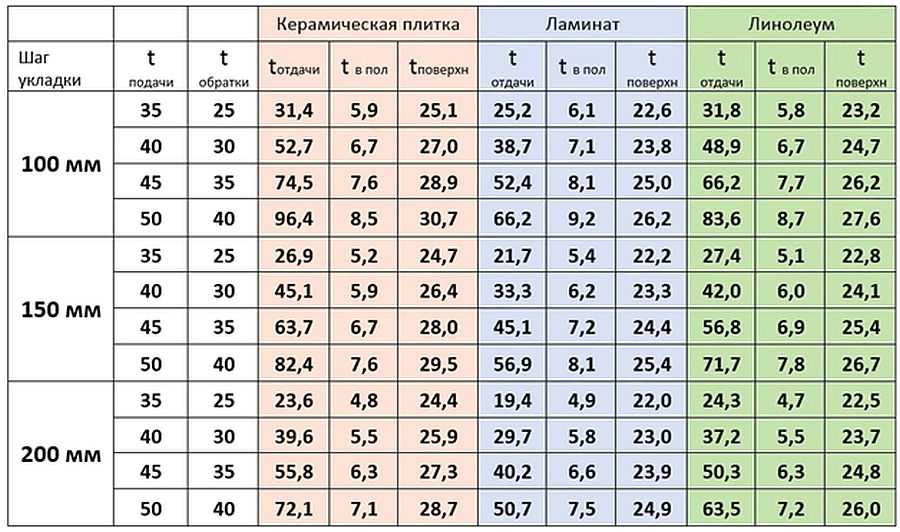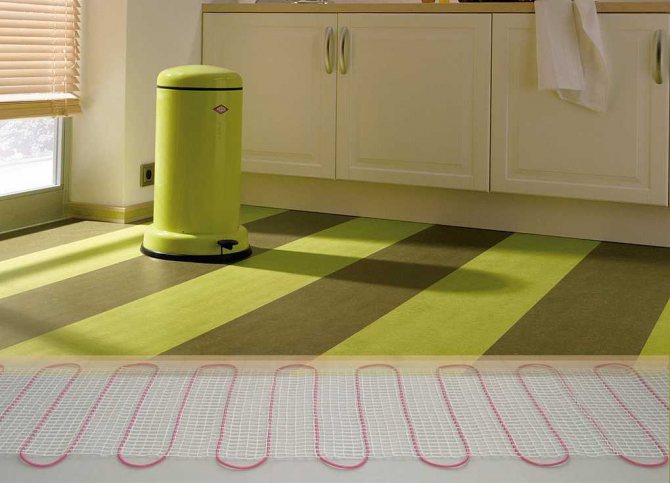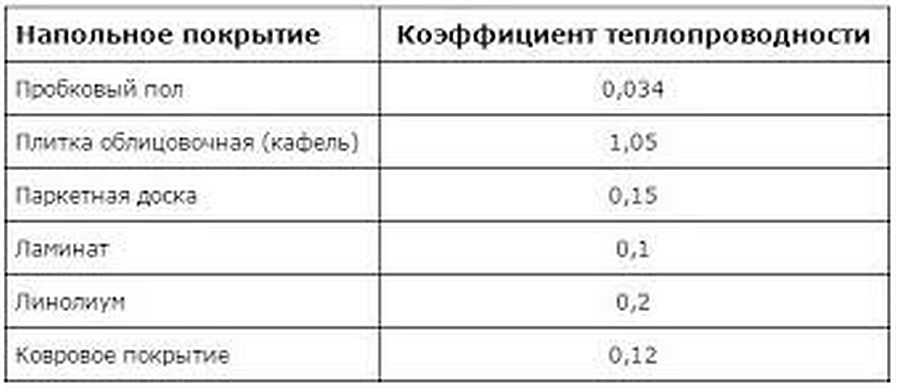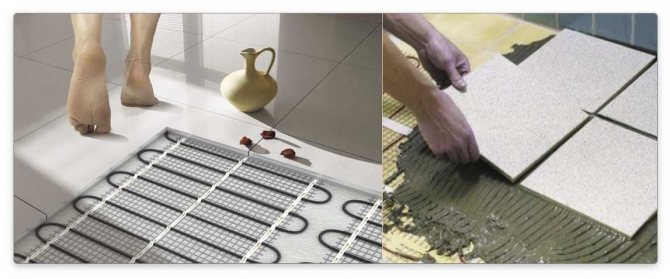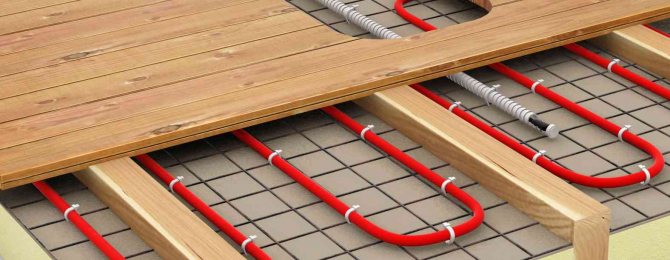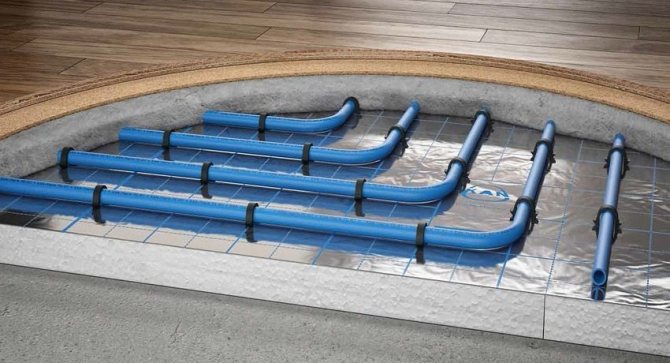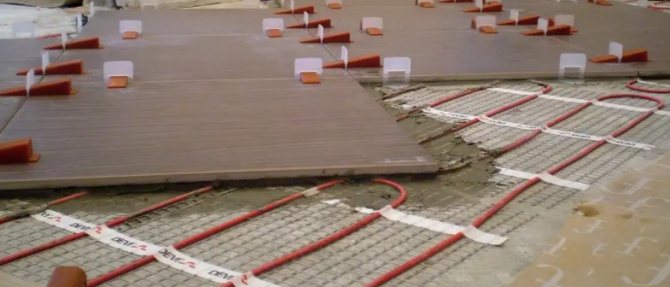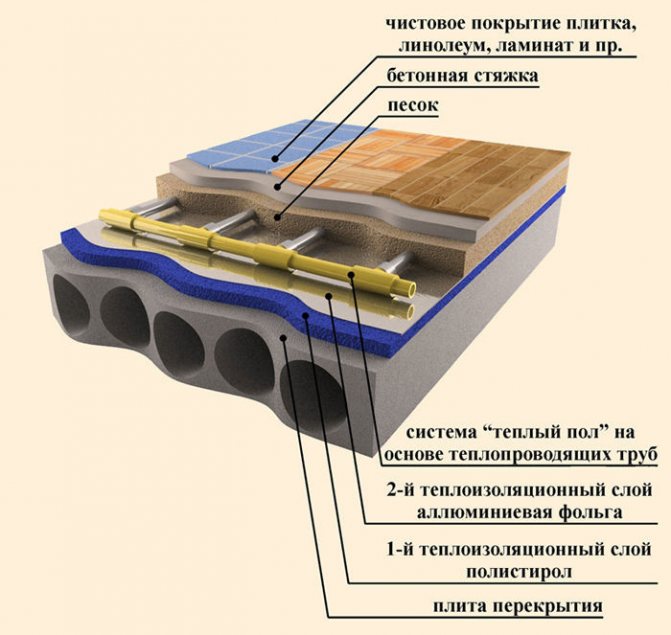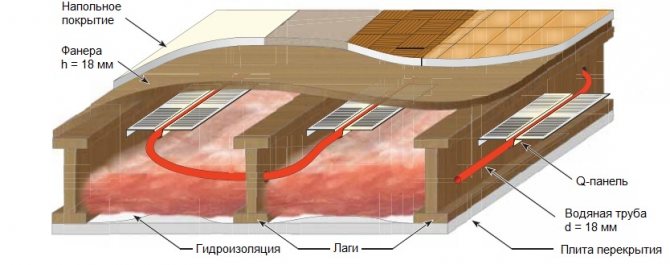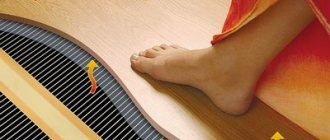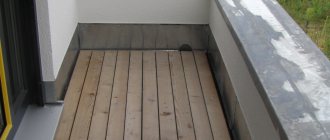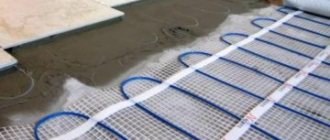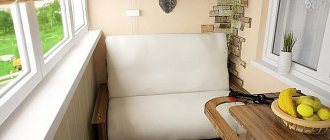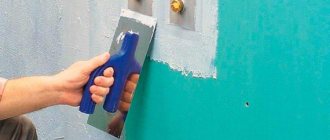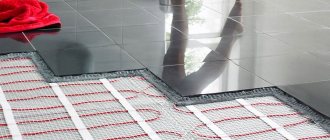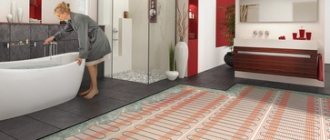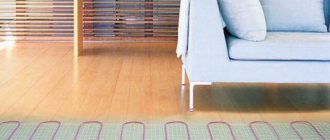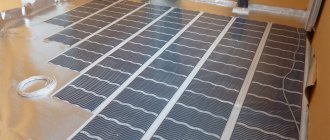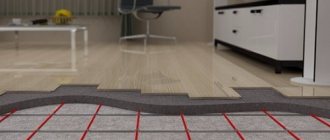Recently, a new floor covering called vinyl flooring is rapidly gaining popularity - vinyl tiles. Customers have already been able to appreciate all the positive characteristics of this relatively new flooring. In particular, it seems attractive that it can be used without restrictions, on any surfaces. In this regard, many people have a question: is it possible to lay a warm floor under vinyl tiles? And if so, how can this be done?
We will try to comprehensively comprehend the issue.
You can stack! But why?
This question is actually asked a lot, as many users want to combine the excellent qualities of vinyl flooring with increased living comfort. Comfort is always associated with warmth underfoot. Manufacturers of various underfloor heating systems are constantly talking about this. There is even a popular expression that is often used as a belief by the sellers of these products: "the head should be cold, and the feet should be warm."
But let's figure out what kind of warmth is actually comfortable for a person, and then we will already draw conclusions about how to lay vinyl on top of a warm floor.
In fact, a comfortable temperature for a person can be called a temperature that is significantly lower than his own body temperature. Otherwise, the person begins to experience discomfort. And this primarily concerns the temperature of the surface under the feet. After all, we are genetically accustomed to feeling the coolness of the floor under our feet, and this is understandable, familiar, comfortable.
When the earth begins to “burn” underfoot, a person's usual sensations go astray. Those who have purchased a system of underfloor heating for sure will confirm these words, because everything should be in moderation. In moderation, with a general comfortable temperature in the room, there will be warmth, which is given by an ordinary wooden floor, moreover, unpainted (painted colder).
So, returning to the topic of conversation, we can say that the thermal conductivity of our vinyl floor is equal to the thermal conductivity of wood. What does this mean? Only that the use of warm floors for this type of coverage is simply not required. Although possible if desired.
This coating itself is warm, comfortable and therefore does not need any external heating. Well, if only it is not laid on the concrete floor, which is arranged directly on the cold ground of the lower floor.
Water heating
Regarding this solution, we can say that it has many disadvantages with a small number of positive aspects. The only advantages can be attributed to the fact that after pouring the cement, a flat surface is formed, which is excellent for laying vinyl, and the fact that thin details compensate for the increase in the height of the floor relative to the ceiling with their small thickness. There are many more cons:
- You will have to fill the screed and this will inevitably require either the involvement of professionals, or long independent work.
- After the screed is done, it takes a long time to dry. At the same time, the filling process itself also takes a lot of time.
- The temperature of water floors can be quite high, which negatively affects the condition of the decorative coating.
- Such a floor is very difficult to configure in rooms with complex shapes.
- The height of the room will be significantly reduced after the installation of all components of the structure.
- There is a risk of leaks.
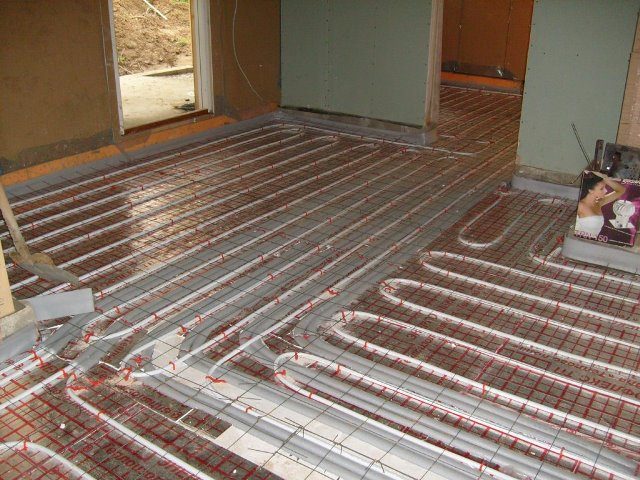
Why is it like that?
A reasonable question may arise: why is it so warm, is it a vinyl covering?
In fact, vinyl tiles are somewhat reminiscent of different finishing materials. For example, it is similar to linoleum without a base - in terms of strength and ability to withstand mechanical stress. Vinyl is similar to laminate in the way it is cut and laid. Moreover, it is the same to the touch as wood. And this is really so - vinyl has absorbed the best characteristics of the previous coatings to date, including:
- the strength of linoleum and its ability to withstand mechanical and other influences;
- ease of installation, inherent in products from laminated boards and tiles;
- external attractiveness, which is provided by new technologies, which make it possible to make an almost unlimited choice of colors and textures of the new coating.
Those who have floor tiles, laminate or linoleum in their apartment, when laying vinyl tiles, note its incomparably greater warmth than all other coatings. And this despite the fact that its thickness is only about 5-6 mm! It's all about the composition.
Vinyl tiles consist of several layers of different thermal conductivity:
- vinyl backing - a layer from below, which helps the tile better adhere to the base and increases sound insulation;
- medium dense vinyl layer;
- decorative vinyl layer on which the pattern is printed;
- polyurethane protective film that preserves the decorative layer and gives additional wear resistance to the finishing material.
All layers are interconnected by polyvinyl chloride polymer compound, which is harmless and only improves the performance of the coating.
What is Quartz Vinyl Tile?
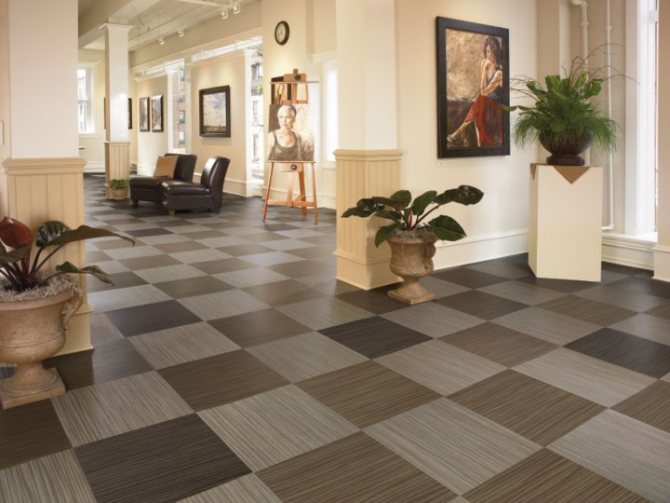

Quartz vinyl tiles can be called an advanced PVC coating. It contains polyvinyl chloride, in an amount of 20%, along with all other additives, and from 60 to 80% of quartz sand. Thus, the coating by its origin is closer to this mineral. This factor has a significant impact on the strength and other performance characteristics of the material.
The presence of polyvinyl chloride in quartz vinyl tiles enables manufacturers to produce coatings with imitation of various materials and textures. Therefore, consumers can furnish their floors with wood, marble, granite, slate, ceramics and everything else. This makes it possible to translate into reality design developments of any complexity, without spending significant financial resources.
Where should you lay your vinyl underfloor?
And yet we are all human - different. Someone wants it to be hot underfoot, and someone has no other source of heat except heating by means of a warm floor (and this also happens). Finally, there are places in an apartment or house where the floor should really be warmer than the traditional one. For example, in rooms such as a bathroom, a loggia or a nursery where a small child grows up.
In such cases, it makes sense to consider how to install underfloor heating under vinyl laminate or vinyl resin tiles.
Heating cables
In principle, the disadvantages of this type of underfloor heating are comparable to the previous version. Here, too, the pouring of the leveling mortar and the increase in the floor height cannot be avoided. In addition, electric shock may result if the cable is not installed correctly. However, in the case of a cable, there are not so many disadvantages as in the case of water heating circuits, and some of them are leveled by the existing positive qualities of the solution. Therefore, you need to decide whether you need a warm floor of this type, laid under PVC tiles, based on its positive qualities:
- The fill thickness will be half the size.
- It will be much easier to configure the heating area due to the elasticity of the cable.
- You can connect all the components yourself.
- PVC boards are also easy to install on the flat surface of the screed.
- There is a possibility of more accurate automatic control over the temperature of heating the cable.
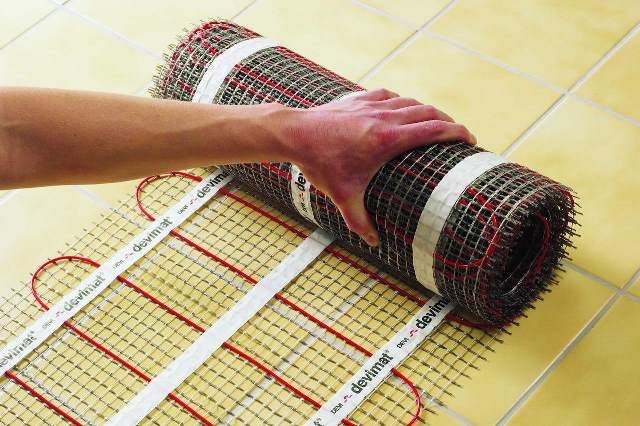

What is the best underfloor heating for vinyl?
In general, virtually any underfloor heating system is suitable for installation under vinyl flooring. When heated, vinyl floors do not emit harmful substances, they do not melt at temperatures up to 80 degrees, although the recommended temperature for heating vinyl floors is considered to be up to 40 degrees Celsius.
Predominantly, vinyl tiles for underfloor heating are laid on the water floor, cable-electric and underfloor heating. We will tell you separately about the use of each type of underfloor heating system.
How to install vinyl floor tiles is the video below.
Option 1: Vinyl over water floor on wood base
It should be noted right away that it is impossible to lay the underfloor heating system on a wooden base using an electric circuit! This is not recommended from the point of view of firefighters and their requirements due to the risk of fires!
Thus, if the base is wooden planks or other wood flooring, then choose a water floor, followed by a vinyl tile or vinyl laminate.
Installation is carried out as follows:
- A water circuit is laid on a wooden base, between which wooden logs are laid.
- A sheet of plywood or OSB is laid on top of the intertube logs of the heated floor, which is fixed with self-tapping screws for strength.
- Self-tapping screws are recessed in a sheet of plywood, the insertion points are putty.
- On top of the plywood, flooring is laid in the form of a roll covering, tiles or in vinyl lamellas. If a vinyl covering with locks and an adhesive base is used, then it is not necessary to sand and repair the irregularities arising from the self-tapping screws.
Option 2: Vinyl on a concrete screed with water-heated floors
This method is used in most cases when it is necessary to lay a system of heated floors with vinyl covering over concrete, which is most often found in our apartments.
In this case, the styling is done in this way:
- A layer of waterproofing material (roofing material or a simple polyethylene film) is laid on top of the concrete floor.
- A water floor system is being installed.
- The system is secured by laying a cement concrete screed.
- The final leveling coating is poured. It makes the floor smooth and even.
- The last layer is vinyl covering.
Option 3: Vinyl Flooring over Electric Floor and Concrete
In the same case, if you have to insulate a concrete floor, you can also use a system of electric floors with heating and subsequent laying of a vinyl covering. This is done like this:
- On top of the leveled concrete, a floor system with an electrical circuit is installed.
- From above, the system is fixed with a layer of polymer-cement screed.
- Once the screed is completely dry, the flooring is ready for vinyl or vinyl roll installation. It is convenient to lay on such a floor both adhesive vinyl tiles and material with a lock joint.
Option 4: Vinyl flooring on top of concrete and film floor heating
This is the easiest way to make very warm floors with a warm floor system and vinyl flooring. This is done in this way:
- Lay the underfloor heating film system on the prepared (leveled, cleaned) concrete base.
- You can immediately lay a vinyl layer on top of the warm floor. It is important to take into account the fact that only vinyl covering with snap joints can be used for laying on a film warm floor!
Installation
The installation process begins with the need to properly prepare the base. It must be strong and even. To achieve this result, it is necessary to screed with cement or self-leveling polymer-based mixtures.
If the base is wooden, then the leveling process should be performed from OSB plywood sheets or chipboard boards. An even surface must be primed and checked for moisture. The last criterion should not be higher than 5%. Special glue is used to fix the plates. If this is not the case, then installation can be performed using a dispersion adhesive. But what is the consumption of glue for tiles and how to calculate it yourself is indicated here in the article.
On the video, quartz vinyl tiles on a warm water floor:
Prepare the glue following the instructions. Apply to the surface with a notched trowel. At the same time, make sure that the layer is even. After applying the adhesive, wait for a while so that it can acquire adhesion strength. This usually takes 10 minutes. Plates are produced in two types: squares and rectangles. Sizes may vary.
The laying process can be carried out along the premises, in the case of laminate flooring. And if you use square tiles, then they have to be placed along a line that is parallel to the length of the wall.
You may also be interested in knowing how much tile adhesive dries on the floor.
But what kind of wall panels exist for bathroom tiles and how to choose the right building material will help to understand the information from the article.
It will also be interesting to know what kind of glue to glue the tiles on to drywall.
But how to glue ceramic tiles to concrete and whether it is possible to pick up the glue yourself, is described here in the article.
A few general tips
When installing underfloor heating with subsequent coating of the product, you need to follow some recommendations.
For example, do not stack vinyl on top of foamed materials.
The heating temperature of warm floors covered with a vinyl layer on top should not exceed 40 degrees Celsius!
Where heated floors are installed, there should not be any carpets and furniture without legs, excluding the free passage of heated air.
The last statement once again makes you think about whether, in principle, warm floors are needed where there is a coating that in itself is much warmer than the warmest wood? Not to mention other coatings known today.
This floor itself is a warm floor. It creates a comfortable tactile sensation without the need for additional heating. At the same time, both a carpet and any furniture can be placed on this floor without fear of ruining the heating system. And if there is no point in laying additional insulation, then why look for different options and at the same time overpay?
Vinyl flooring is suitable for laying on top of any underfloor heating system. In each version, it is able to withstand any thermal influences and loads.
The cost and quality of quartz vinyl tiles
Quartz vinyl tiles meet all the necessary requirements for this floor covering. The cost of this material depends on the percentage of quartz sand content, the country of origin, the prestige of the company, the method of joining, the width of the tile, and its thickness. Average. It ranges from 400 to 800 rubles per square meter.
The excellent price-quality ratio of quartz vinyl tiles makes this material more and more popular, since it can save significant money on transportation, floor preparation, installation work, which reduces the time to complete the work. Plus, the appearance of the finished coating from this tile surpasses the most expensive and well-known materials.
Features of laying tiles
When the material is purchased, it is laid in the room where the installation will be carried out, so that the tile "softens".
Tiles are:
- with glue in the set;
- self-adhesive;
- with locks.
Tiles are laid out on a long wall. Also keep in mind that first, solid elements are glued, after which the cut ones are added.
